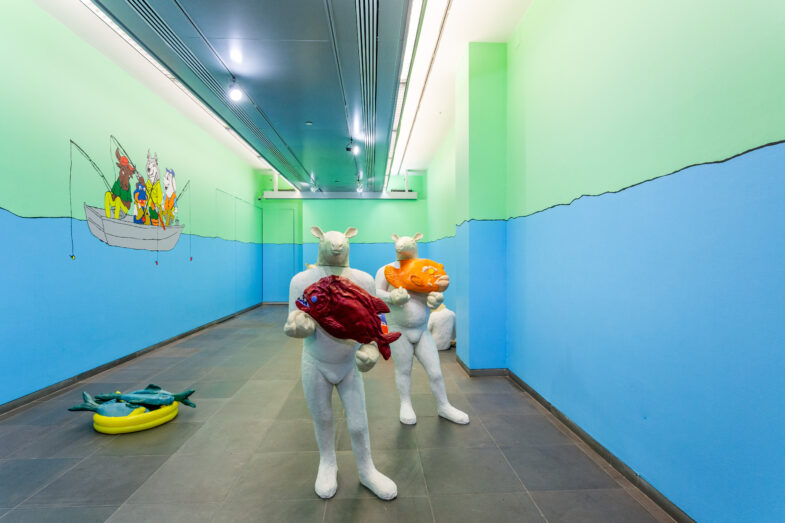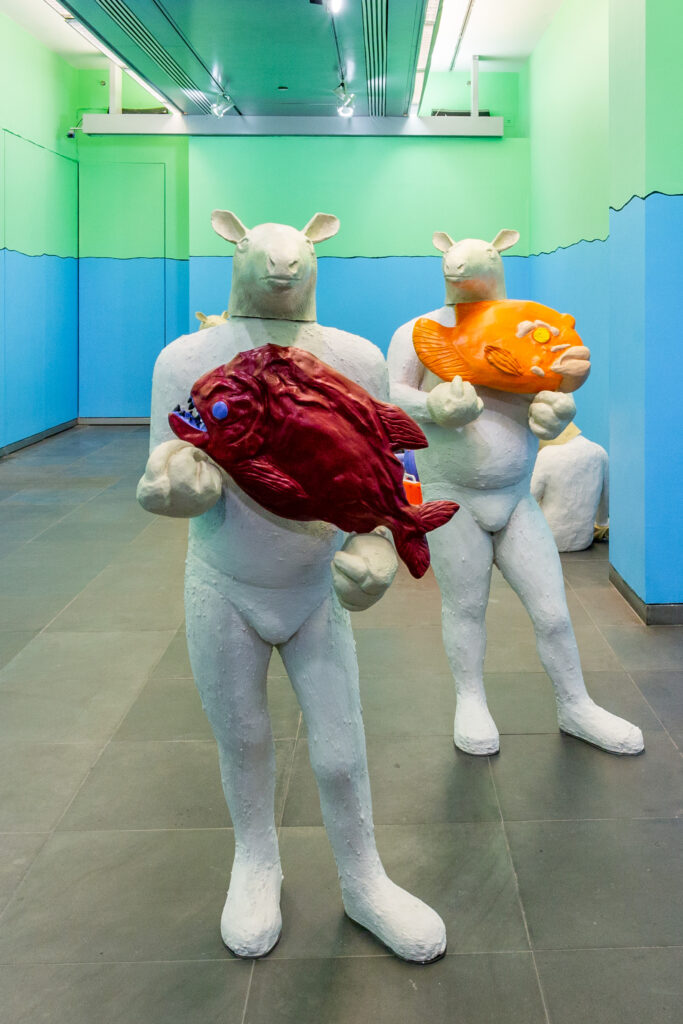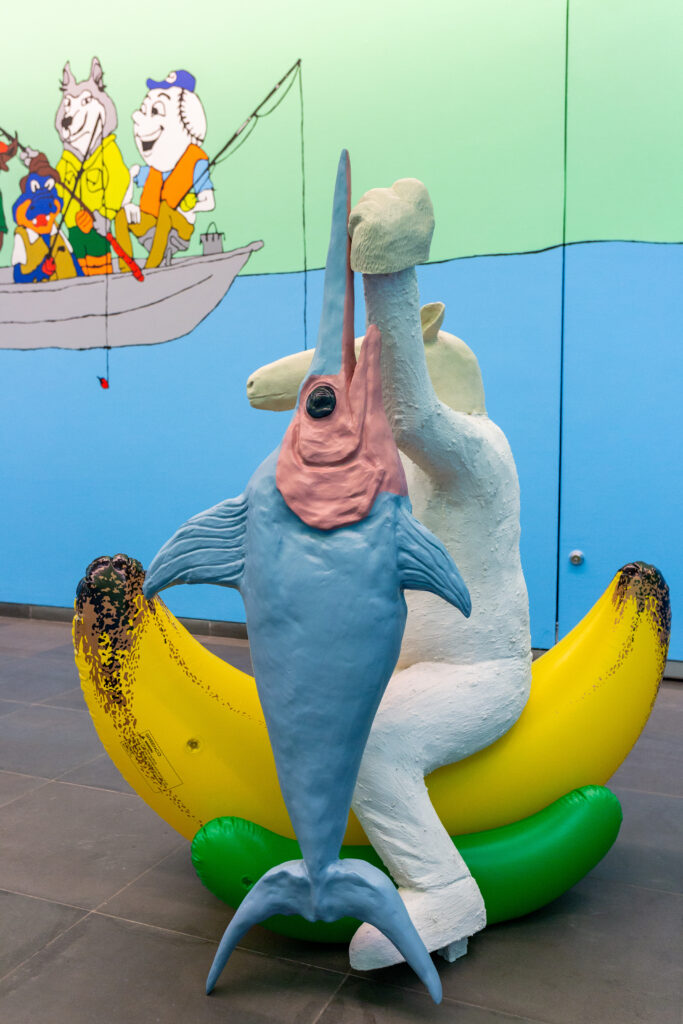Mixed media installation, 2019
Exhibition view ACFNY, New York, USA
Photos by Luca Mercedes
Political zoology
The anthropomorphization of animals is an often used and abused method of thinking and representing the political. Whether it is bee colonies as ideal states, humans as wolves preying upon another or newts as colonizers, human problems are everywhere projected onto animal societies that are, in turn, presented as a shining example or as a warning. It matters little what the actual relationships among bees, wolves or newts are like. For the creation of metaphors, precise knowledge of animal societies is more of a hindrance.
Next to this, there is an equally long tradition in the arts that consists of turning humans into animals. One can identify at least three methods of zoomorphization:
First, there is allegorization, where animal heads are grafted onto human bodies in order to better capture human qualities. The group of figures “Charging Bull, Wolf of Wall Street, Mr Met and Sparky the Dragon” contains such allegories.
Second, there is metamorphization, which Ovid practiced in the most artful and exemplary manner. In metamorphoses humans assume the shape of animals, plants, stars or stones as a consequence of their actions. They are deprived of language because they are too talkative or lie. They become trees entwining one another because their love is so faithful or snakes because they have nimbly and aggressively defeated all foes. It is impressive how Ovid renders these transformations palpable on the level of language: One almost feels the neck stiffening when someone is transformed into a cow, the tongue forking inside the mouth or skin turning into bark.
Eduardo Viveiros de Castro has pointed to a third method: his studies on Amerindian cosmologies depict a universe that turns political zoology as we know it upside down. Viveiros de Castro describes a world in which there were only people respectively humans (and sometimes turtles) at the beginning. It is only over the course of time that these differentiated themselves and became what we are used to calling nature. First there was culture, humanity – albeit one that was not clearly determined anatomically – and out of it emerged animals, plants and minerals, all of which exist “in society”. “The platitude that every novice left-wing militant learns,” he writes together with Déborah Danowski, “– that everything is political – acquires in the Amerindian case a radical concreteness.”
When, in Gabriele Edlbauer’s sculptures, strangely indeterminate animal heads grow out of bodies marked as male and an idyllic bro scene is created, all three dimensions of zoomorphism and even more come together. They are put into a metonymic tension where it is no longer certain who represents whom or what. Are the figures being transformed into humans or do humans become animals? It is an unlikely gathering of brothers whose brotherhood no longer has anything to do with the political virtue of fraternity but rather exudes a “living apart together” in the age of ubiquitous and limitless capitalism. It is only fitting, then, that fish are merely conceded a wading pool for their habitat.
Another tension is that between the three categories of the aesthetic that, according to Sianne Ngai (2012), define the early 21st century: cute, zany and interesting. These guys are cute, interesting clowns; they are everything at the same time and therefore deeply uncanny and much too familiar in this era of creepy clown presidents. In their tameness, the figures only appear more threatening. Like some leftists arguing in national-socialist terms, one almost wishes for a return of the old – sovereign and clearly distinguishable – state animals: lions and eagles. These seem more stable than the many hybrid beings made from porous state sovereignty, left-behind nationalism, economic liberalism and supranational agencies that we are currently dealing with. Yet the old male animals do not quite convince us. This much we have learned from the short 20th century: the lesser evil is not a solution.
One thing is certain: As political zoology the exhibits are pretty skewed and twisted, yet they should not be understood as a call to straightness but rather as invitation to engage with complicated feelings. In a complicated present, only those who know complicated feelings have a chance to do something else than swim in circles with the fish.
Text by Karin Harrasser






